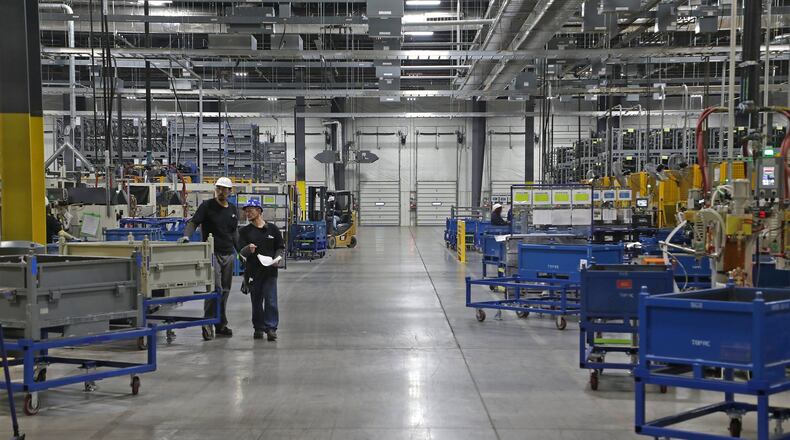It represents the single largest one-month job decrease in decades in the county. Until April, the Springfield metro area, which includes only Clark County, never lost more than 800 jobs in any single month.
MORE: Coronavirus: Camp Clifton asking for donations after cancelations
In comparison, previous record one-month job losses since 1990 occurred during the January of 2002, which saw a loss of about 800 jobs, and in October, 2009, with 600 jobs lost. This is according to Bureau of Labor Statistics’ records going back 30 years.
The current economic crisis is unprecedented in terms of the speed and severity of its impact on a number of different sectors across the economy, said Horton Hobbs, the vice president of economic development for the Chamber of Greater Springfield.
“It is not comparable to any other time in recent history,” he said.
As in the past, massive job losses have been centered around specific industries and its pace has been more gradual. However, the economic impact caused by the COVID-19 pandemic has affected the economy as a whole, not just certain industries such as manufacturing or banking as seen in the past.
The nature of the pandemic has also caused a lot of uncertainty on how this will impact consumer confidence in the months to come, Hobbs added. Especially as businesses previously shuttered due to a statewide stay-at-home order reopen.
Though the local economy is gradually reopening and once furloughed workers are returning, it is hard to predict the long term financial impact that the pandemic will have. Especially since it is a global health crisis.
For example, there was an increase of 100 jobs in retail trade in the county in April, bringing the total number of those jobs to 5,100. However, that trend may change when data pertaining to May is released and factored in.
The impact on retail has especially hit small businesses the hardest, Hobbs said.
“The time in which certain sectors changed their operations took longer than some. It may have taken some businesses as a whole longer to interpret the rules and make changes as a result,” he added.
National and state guidelines designed to stop the spread and exposure of COVID-19 has also contributed to its economic impact. The pandemic will likely continue to impact consumer trends for some time, Hobbs said. It is also hard to ignore the large jumps in unemployment claims between March and April.
MORE: Coronavirus: 33,439 total cases, 2,044 deaths reported in Ohio
The impact of the pandemic is different depending on the industry. For Clark County it means a number of businesses have had to make adjustments or had to temporarily suspended operations.
Some businesses were forced to temporarily close because they were deemed non essential. Others voluntary shuttered their doors due to a lack of customers or because of shortfalls in the supply chain.
But, Hobbs, added the demand for some products and services in the county, especially in food production, increased.
A look at the latest federal labor data shows the largest decline in the county was in leisure and hospitality employment followed by manufacturing. The first saw employment fall from 5,200 jobs in March to 3,000 jobs in April, representing a 42.3% decrease.
Manufacturing jobs in the county declined by 1,000 jobs or a decrease of about 14% between the same period, bringing the number of those jobs in April to 6,200. Hobbs said the diversification of local manufacturers has put the county in a better position when compared to others in the state.
The impact that the pandemic has had on supply chains, especially in the auto industry, has caused some local employers to temporarily suspend production. Some also expect a reduced production schedule in the near future.
Leisure and hospitality jobs in the county are usually tied to local tourism. The pandemic has caused a 50% decrease in Ohio’s tourism workforce, said Chris Schutte, the vice president of destination marketing and communications for the Chamber of Greater Springfield.
That also relates to tourism drivers such as events, other sources of entertainment and lodging.
“Our local occupancy rates for the month of April were down more than 50% when compared to last year,” he said of area hotels and motels, noting that the county had a total occupancy rate of 33%.
About the Author
